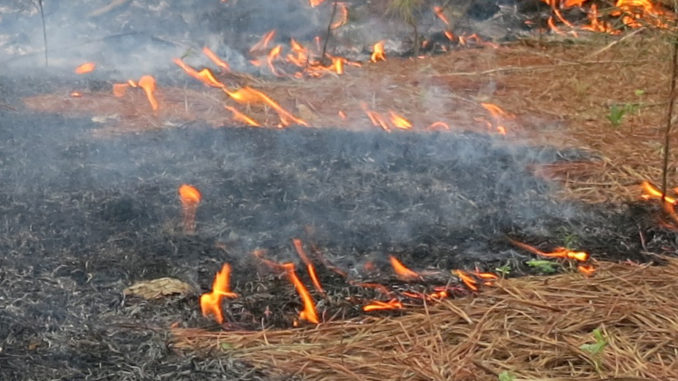
Winter burning can get soils ready for spring
Fire has a bad connotation when it’s discussed, possibly because so many lives and so much personal property have been lost to it. When not contained or controlled, fire can be devastating.
Even though fire can bring death and destruction, controlled fires in a rural setting on hunting properties is beneficial on several levels. Whether you’re trying to grow a premium stand of timber or a lush food plot, winter burns promote soil productivity and provide the necessary components for vigorous growth in the plant world. When soils improve, target plant life flourishes and wildlife are on the receiving end. It’s a win-win situation for both the landowner and the wildlife.
Using fire as a management tool is typically foreseen as a way to reduce competition in the forest or to unwrap dense, forested areas covered with thick brush to make it easier to see a big buck or a covey of quail flush. While these results reward landowners, the greatest benefits are in the dirt. Fire affects the chemical, physical and biological soil properties, the greatest benefits for using fire as a wildlife and forest management tool.
Fire can be used in forested settings to promote the stand and to provide a response on the ground level for new forage components. Landowners with substantial-sized food plots should use fire to consume remaining plant matter for soil improvements.
The key to growing lush food plots begins at the ground level, or really, just below. The soil is the chief source for primary and secondary nutrients required for establishing and maintaining growth. Quite often, the nutrients required for plant growth are unavailable due to a chemical or mineralogical imbalance, primarily caused by an improper pH range. Exposing these soils to frequent, low-intensity fires can raise the soil pH between 0.5 to 1 units, depending on the current level. In a food plot, that’s significant.
When the pH rises and approaches a more neutral state, more macro-nutrients and micro-nutrients become soluble for plants that have an immediate positive response with increased productivity.
Low-intensity fire can directly affect the nutrient availability in the soil beyond pH improvements. Many parts of the Carolinas, especially eastern sections, have a thick organic layer of roots, humus and un-decomposed plant material. These layers are rich with nitrogen and carbon, but their availability is stored in the un-decomposed plant fibers and is generally unavailable to new plantings. Fires in these sites will benefit greatly by allowing carbon and nitrogen to become available in the soil.
While some of the nitrogen will volatilize, the residual outcome is an increased availability of nitrogen in the mineral soil. Fire redistributes the nitrogen content left in plant silage after food plots have died from winter kill or over-browsing as well.
Fortunately, low-intensity fires don’t negatively affect the macro-nutrient and micro-nutrient pools on sites with solid mineral soil coverage, because the volatilization rate for most of these nutrients requires extremely high temperatures rarely seen in a low-intensity fire. The more-likely outcome is a rise in potassium, calcium and magnesium availability, another win-win concept for food plots.
In any fire, ash is produced; it can be defined as very fine, unburned particles. While excessive ash can cause issues, a low-intensity fire across a spent food plot will only produce minor levels of ash. A small amount of ash can provide benefits in sandy soils by allowing them to retain moisture. Water retention in dry, sandy sites can be problematic; a low-intensity fire can improve conditions.
To improve productivity in food plots for the 2016 season, take time in February to burn inactive and idle food plots before plow.




Be the first to comment